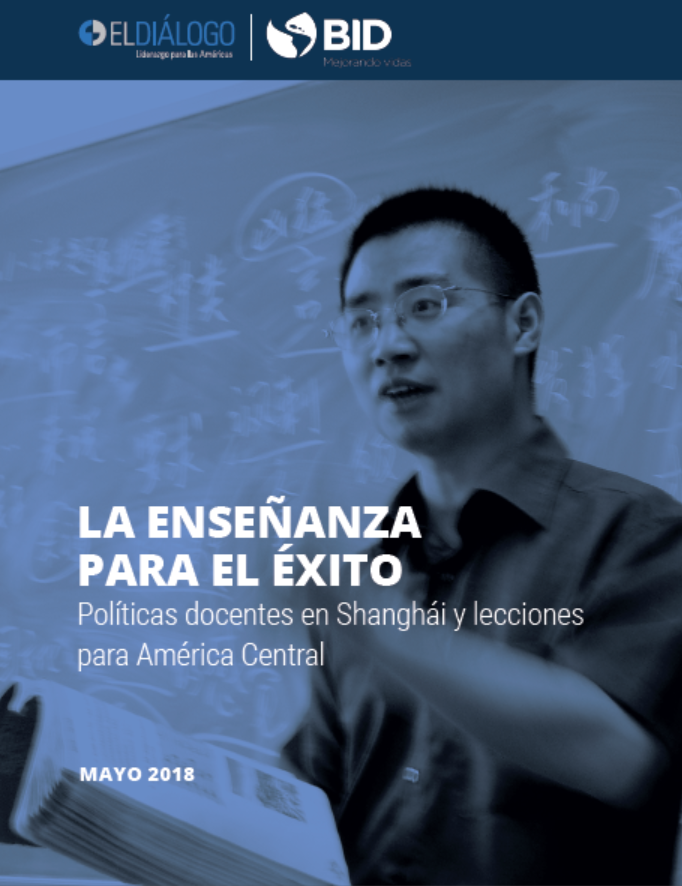The Politics Of Disaster Relief
After a 7.0 magnitude earthquake struck Haiti, the aftershock reached China in ways that few anticipated.The earthquake forced Chinese leaders to navigate the tricky politics of disaster relief.
This post is also available in: Español
Teacher quality is one of the variables that most impacts student learning. As a result, education systems worldwide are paying close attention to the practices of countries with high-quality teachers. Shanghai, one of the best-performing education systems in the world, supports teachers with an integrated professional development framework that incorporates multiple levels of continuing education, regular performance evaluations, and a structured career path with mechanisms for teacher promotion. In contrast, the Dialogue’s series of reports on teacher policy in Latin America have shown that, although progress has been made towards improving teacher policies and developing consensus around their importance, there remain significant gaps and bottlenecks.
This report, published with support from the Inter-American Development Bank, examines the ways in which Shanghai has been successful in developing and strengthening its teaching force, and identifies key lessons that could be applied to the Central American context.
Set a foundation for effective teaching: It is critical to establish policy mechanisms that attract the best candidates to the teaching profession and guarantee the quality of teachers. For example, countries should clearly define educational standards for students and teachers, and regulate teacher training institutions with an emphasis on producing teachers with 21st century skills. Another lesson we can take from the case of Shanghai is the importance of ensuring that pre-service teacher training includes more practical experience in the classroom, in addition to theoretical instruction.
Increase instructional time: We know that in Central American countries, a great deal of time is spent on administrative practices that detract from instructional time, such as maintaining order in the classroom and taking attendance, and that teachers often employ methods that don’t take into account learning differences among individual students. Common strategies in Shanghai, as well as in other education models such as Escuela Nueva, include redefining the teacher as a “facilitator,” encouraging collaborative learning in groups, and performing regular diagnostic evaluations that enable teachers to provide personal attention to students experiencing academic difficulties.
Manage for good performance: Good teacher performance can only be guaranteed through rigorous evaluations. In Central America, standardized evaluations produce extensive data on student performance, but there is still a great deal of room for improvement. In Shanghai, all schools have an integrated process to monitor teacher performance that uses various indicators (i.e. the results of student examinations, teachers’ participation in research activities, measures of interaction with students, and classroom observations), the results of which are archived in each teacher’s record and help inform professional recognition and development opportunities.
Develop inputs and infrastructure to strengthen educational equity: Central American countries should ensure that all students, but particularly vulnerable populations, have quality teachers. Initiatives in Latin America that have focused on supporting teachers in disadvantaged schools have achieved promising results. Shanghai has various initiatives to assign teachers to hard-to-staff schools, such as flexible transfers and temporary rotations, along with incentives such as priority admission to post-graduate programs for teachers who have taught at underprivileged schools, accelerated promotion opportunities, and stipends and monetary compensation, among others.
After a 7.0 magnitude earthquake struck Haiti, the aftershock reached China in ways that few anticipated.The earthquake forced Chinese leaders to navigate the tricky politics of disaster relief.
History tells us that economic crises cause large increases in poverty. The most recent economic crisis will cause Latin America’s GDP to contract around 2 percent in 2009.
The goal of education is to promote learning. Sitting in classrooms is a weak proxy for knowing how to read, do math, and apply science. Latin America needs to worry less about schooling and more about learning.
